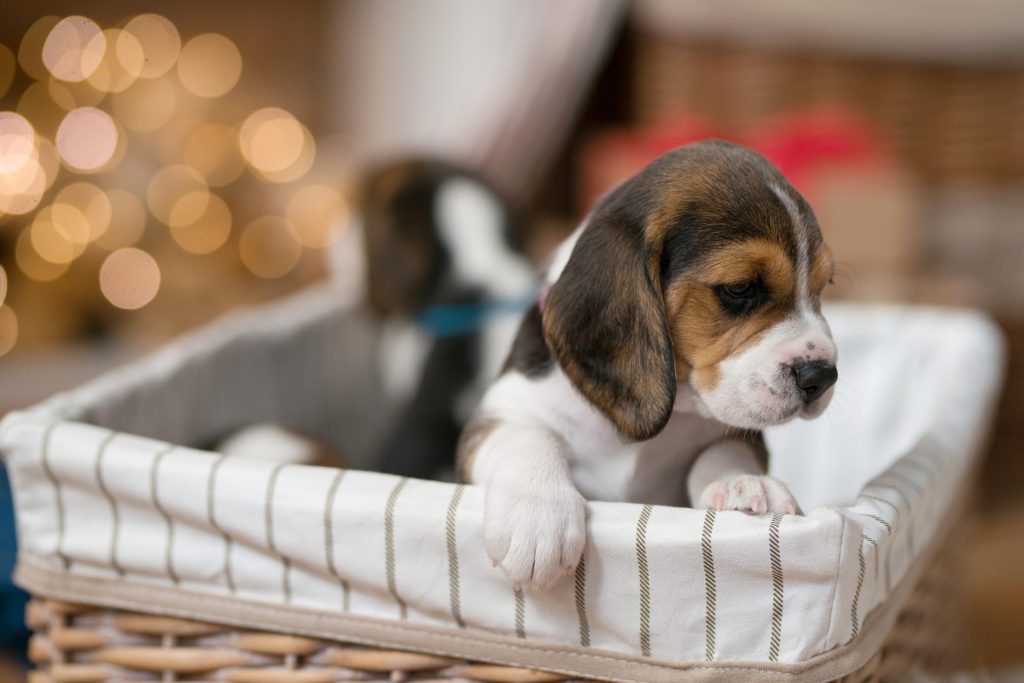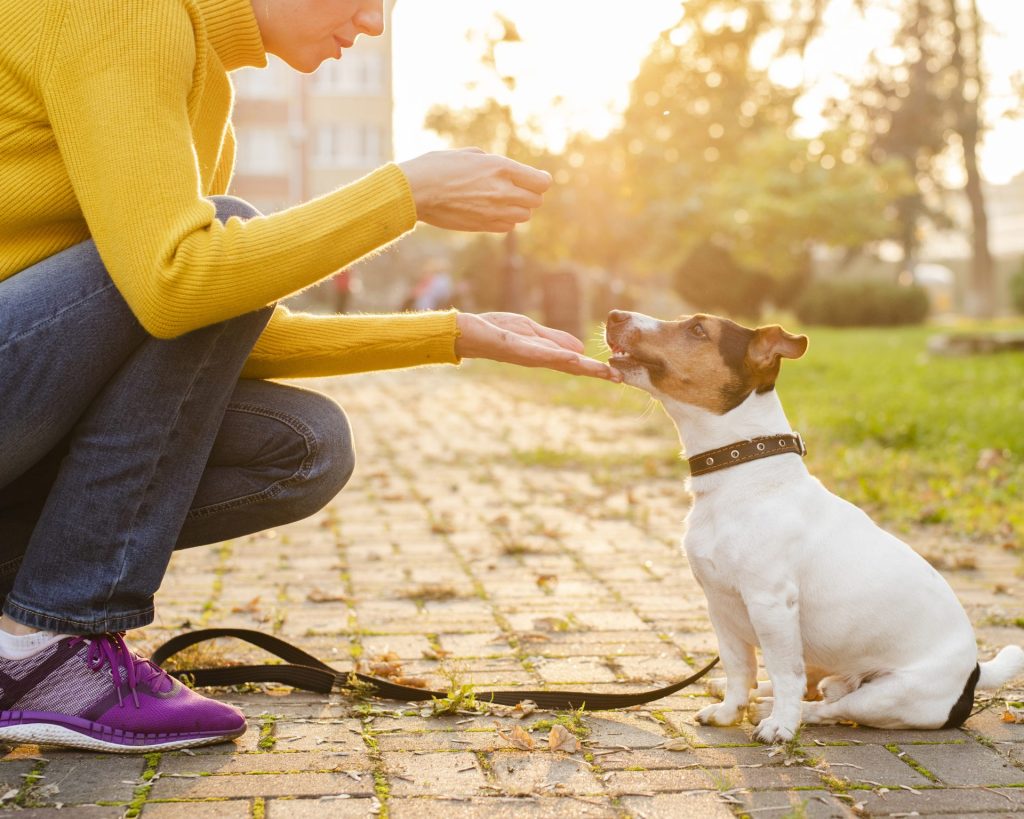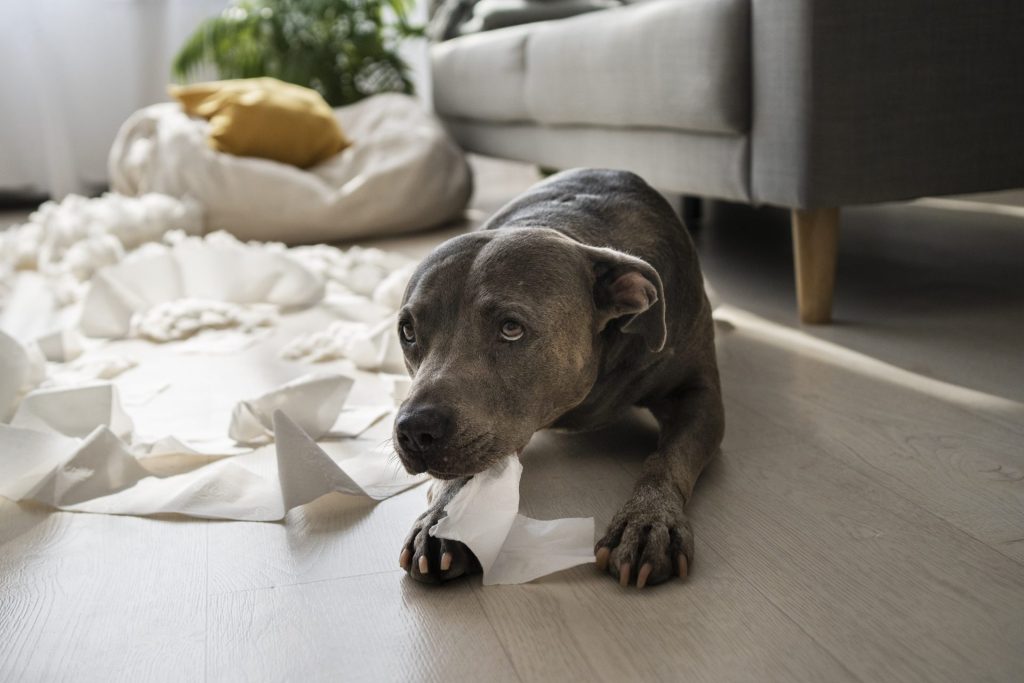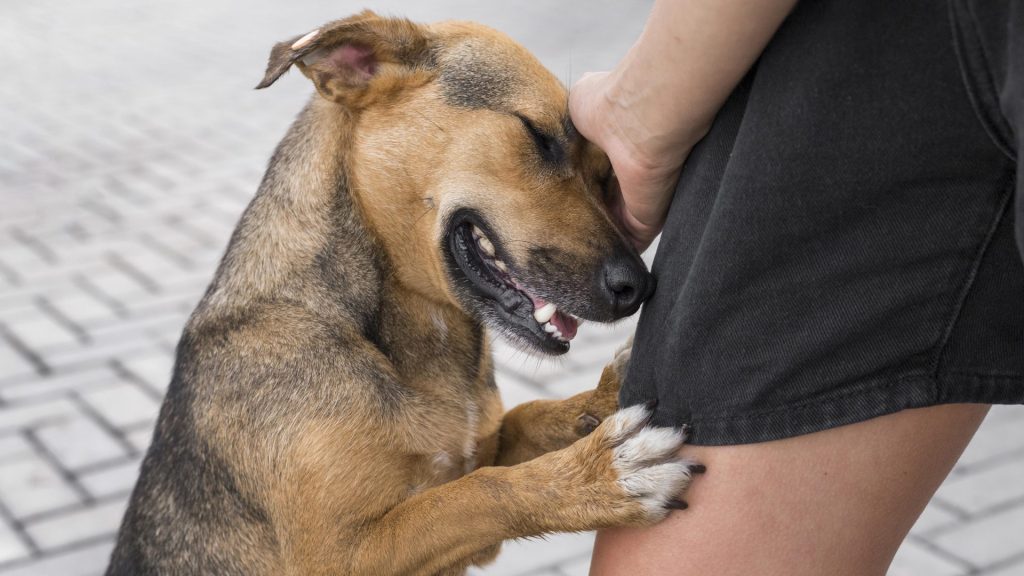Bringing a new puppy into your home is an exciting and rewarding experience. However, it also comes with its fair share of challenges, particularly when it comes to training your puppy. Properly training your puppy is essential for ensuring that it grows up to be a well-behaved and happy companion. In this guide, we will walk you through all the basics and step-by-step processes of training a puppy, from basic commands to the housebreaking process, and train your puppy in puppy socialization classes too.

Setting the Foundation: Patience and Consistency
Before diving into specific puppy training tips and techniques, it’s important to understand that training a puppy requires patience, consistency, and some positive reinforcement training. Puppies are like sponges, ready to absorb new information, but they also have short attention spans. Keep puppy training sessions short and frequent to prevent overwhelming your pup. Consistency in puppy training and your knowledge of how to train a puppy with commands, rewards, and routines will help your puppy grasp what is expected of them.
Basic Commands: Sit, Stay, and Come
Teaching your puppy basic commands lays the groundwork for more advanced, training sessions. The commands “sit,” “stay,” and “come” are fundamental for training, which begins with establishing basic manners, and learning impulse control and communication.
- Sit: Hold a treat close to your puppy’s nose and raise it slowly above their head. As their nose follows the treat, their bottom will naturally lower into a sitting position. Once they’re seated, say “sit” and give them the treat as a reward.
- Stay: Start with your puppy in a sitting position. Hold your hand up, palm facing them, and say “stay.” Take a step back. If they stay put, reward them. Gradually increase the distance and duration.
- Come: Get down to your puppy’s level and use an enthusiastic tone. Say “come” while gently patting your legs. When they come to you, reward them with praise and a treat.
Positive Reinforcement: Treats and Praise
Positive reinforcement is a powerful tool in puppy training. When your first puppy learns and performs a desired behavior, immediately reward them with a treat and praise. This helps them associate the action with a positive outcome, making them more likely to repeat it. As your new puppy becomes more skilled, gradually reduce the frequency of treats while maintaining verbal praise and physical affection.
Crate Training: A Safe Haven
Crate training is an effective method for housebreaking and providing your puppy with a safe space. Dogs are naturally den animals, and with a little crate training, baby steps can replicate this instinct. To effectively train your puppy using crate training, follow these steps:
- Choose the Right Crate: The crate should be just large enough for your puppy to stand, turn around, and lie down comfortably. Dogtra – https://www.dogtra.com/
Our code is NBD10 to save 10% on orders over $200.
- Positive Associations: Place treats, toys, and bedding inside the crate to create positive associations. Feed your puppy near the crate, gradually moving their meals inside.
- Gradual Introduction: Encourage your puppy to explore the crate on their own terms. Keep the door open initially, allowing them to go in and out freely.
- Scheduling: Use the crate for naps, bedtime, and short periods when you’re away. This aids in housebreaking and prevents destructive behavior.
Housebreaking: Consistency is Key
Housebreaking, or potty training your puppy, requires vigilance and consistency. Puppies have small bladders and need frequent bathroom breaks. Follow these steps to successfully housebreak and potty train your puppy:
- Establish a Routine: Take your puppy out first thing in the morning, after meals, before bedtime, and after play sessions. Use a consistent command, like “go potty.”
- Supervision: Keep a close eye on your puppy indoors and watch for signs like sniffing, circling, or whining, which indicate they need to go outside.
- Reward Success: When your puppy goes outside, praise them enthusiastically and offer a treat. This reinforces the idea that going outside is the desired behavior.
- Accidents Happen: If accidents occur indoors, clean the area thoroughly to remove the scent, reducing the likelihood of repeat accidents.
Socialization: A Well-Adjusted Puppy
Socialization is crucial for helping your puppy develop positive relationships with people, other dogs, and various environments. Expose your puppy to a wide range of experiences, including different people, animals, sights, and sounds. This helps prevent fear and aggression later in your dog’s life too.
Health and Exercise: A Balanced Lifestyle
While training is a vital aspect of raising a well-behaved puppy, don’t forget about their physical health and exercise needs. Puppies are bundles of energy, and regular exercise is essential for their overall well-being. Engaging in physical activities not only helps them burn off excess energy but also keeps them mentally stimulated.
Playtime: Incorporate daily play sessions to help your puppy learn to stay active and engaged. Use toys that encourage mental stimulation, such as puzzle toys or interactive games.
Structured Walks: Once your puppy is old enough, start taking them on walks. Walks provide opportunities for socialization and help your puppy become familiar with different environments.
Obedience training during Walks: Use walks as a training opportunity. Practice commands like “heel” with your dog or puppy, teach basic obedience commands to your dog or puppy, and train your dog or puppy to walk calmly beside you without pulling on the leash.
Mindful Exercise: Be cautious not to overexert your puppy, especially in the early stages when their bones and joints are still developing. Training sessions for longer periods Short, frequent walks and controlled play sessions are ideal to begin puppy training with.
Addressing Challenges: Biting and Chewing
Puppies explore the world with their mouths, which often leads to biting and chewing behaviors during puppyhood. It’s important that puppy parents and puppies learn how to address these behaviors early on in puppyhood to prevent them from becoming problematic.
Teething: Puppies and dogs go through a teething phase at a young age, which can lead to increased chewing. Provide appropriate chew toys to the puppy or dogs, or give dog or puppy treats to soothe their gums, sharpen their teeth, and redirect their chewing tendencies.
Biting: If your new puppy nips or bites another puppy and jumps back during play, yelp or make a high-pitched sound to mimic the reaction of a fellow puppy. This communicates to the puppy’s parents and new dog that the puppy’s responding behavior is too rough and helps them understand acceptable play boundaries.
Consistent Correction: If your puppy persists in biting, redirect their attention to a toy. Avoid using chew toys, food lures to lure your puppy home, or your hands as playthings to prevent reinforcing the training of your puppy’s teeth-biting habit.
Healthcare and Grooming: Nurturing Your Puppy’s Well-being
Proper healthcare and grooming practices are essential to ensuring your puppy’s well-being. Regular visits to the veterinarian, vaccinations, and preventive measures can help keep your puppy healthy and happy.
Veterinary Care: Schedule regular check-ups with a veterinarian to monitor your puppy’s health, have young puppies receive vaccinations, and address any concerns.
Vaccinations: Follow a vaccination schedule recommended by your veterinarian to protect your puppy from common illnesses.
Parasite Control: Administer preventive treatments for fleas, ticks, and internal parasites as recommended by your veterinarian.
Grooming: Regular grooming house training sessions are essential for maintaining your dog’s or puppy’s coat, skin, and overall cleanliness. Brushing, nail trimming, ear cleaning, and dental care are all part of a well-rounded dog grooming and housetraining routine.
Training Through Grooming: Grooming sessions can be valuable training opportunities for most puppies. By rewarding positive behavior and gradually increasing the duration of the sessions, you can teach and train your puppy to stay calm during grooming. Utilizing positive reinforcement, you can start with shorter training sessions and gradually extend them.
Advanced Training: Beyond the Basics
Once your puppy has mastered basic commands and behaviors, you can consider delving into more advanced puppy training tips and techniques to further enrich their skills and strengthen your bond.
Trick Training Tips: Teach your puppy fun tricks like “roll over,” jump ahead, “play dead,” or “shake hands.” Trick training stimulates their minds and adds an extra layer of enjoyment to your puppy’s life at home and interactions.
Canine Sports: Engage a new pup in canine sports such as group classes such as agility, obedience trials, or scent work. These activities provide mental and physical challenges for your puppy’s dog trainer, puppy class, and puppy-engaged dog training, keeping them engaged and active.
Off-Leash Training: Gradually introduce off-leash dog training only in safe and controlled environments. Begin to start training in enclosed spaces and work on reliable recall commands in a controlled environment before you start training and venturing into open areas.
Adapting to Growth and Change: Lifelong Learning
Remember that as your puppy grows into an adult dog, their needs, behaviors, puppy training schedule, and requirements will evolve. Continue to adapt your puppy training schedule and in-house puppy training methods to cater to the new environment and your dog’s changing needs.
Adolescence: Just like human teenagers, dogs go through an adolescent phase where they might test boundaries and exhibit stubborn behavior. Stay patient and consistent with dogs during this phase, and continue to reinforce positive behaviors.
Continuous Socialization: Keep up with socialization throughout your dog’s entire life too. Regular exposure to new people, animals, and environments will help prevent behavioral issues.
Mental Stimulation: Provide ongoing mental stimulation to prevent boredom. Puzzle toys, training games, interactive feeders, or other puppies can keep your dog’s mind sharp and engaged.
Professional Training: Seeking Help When Needed
While this guide provides a solid foundation for training a puppy, some situations may require professional assistance. If you’re facing challenges such as severe aggression, anxiety, or other behavioral issues with a puppy that you’re unable to address on your own, consider seeking help from a certified dog trainer or behaviorist. They can provide personalized guidance and techniques tailored to your puppy’s specific needs.
Training a puppy is a fulfilling journey that requires time, effort, and dedication. By focusing on basic commands, positive reinforcement, crate training, housebreaking, socialization, exercise, and addressing challenges, you’re equipping your puppy with the skills they need to become a well-behaved and happy companion.
Remember that building a strong bond with your puppy is just as important to begin training them as teaching them commands and good manners. Embrace the process, celebrate the small victories, and cherish the moments as your puppy grows into a loving and well-adjusted adult dog. With patience, consistency, and a lot of love, you’ll create a lifelong partnership built on trust, obedience training, and companionship.
For more details you can visit our Amazon affiliate shop with our favorite products can be found here: https://www.amazon.com/shop/upstatecanineacademy. Happy Shopping!



